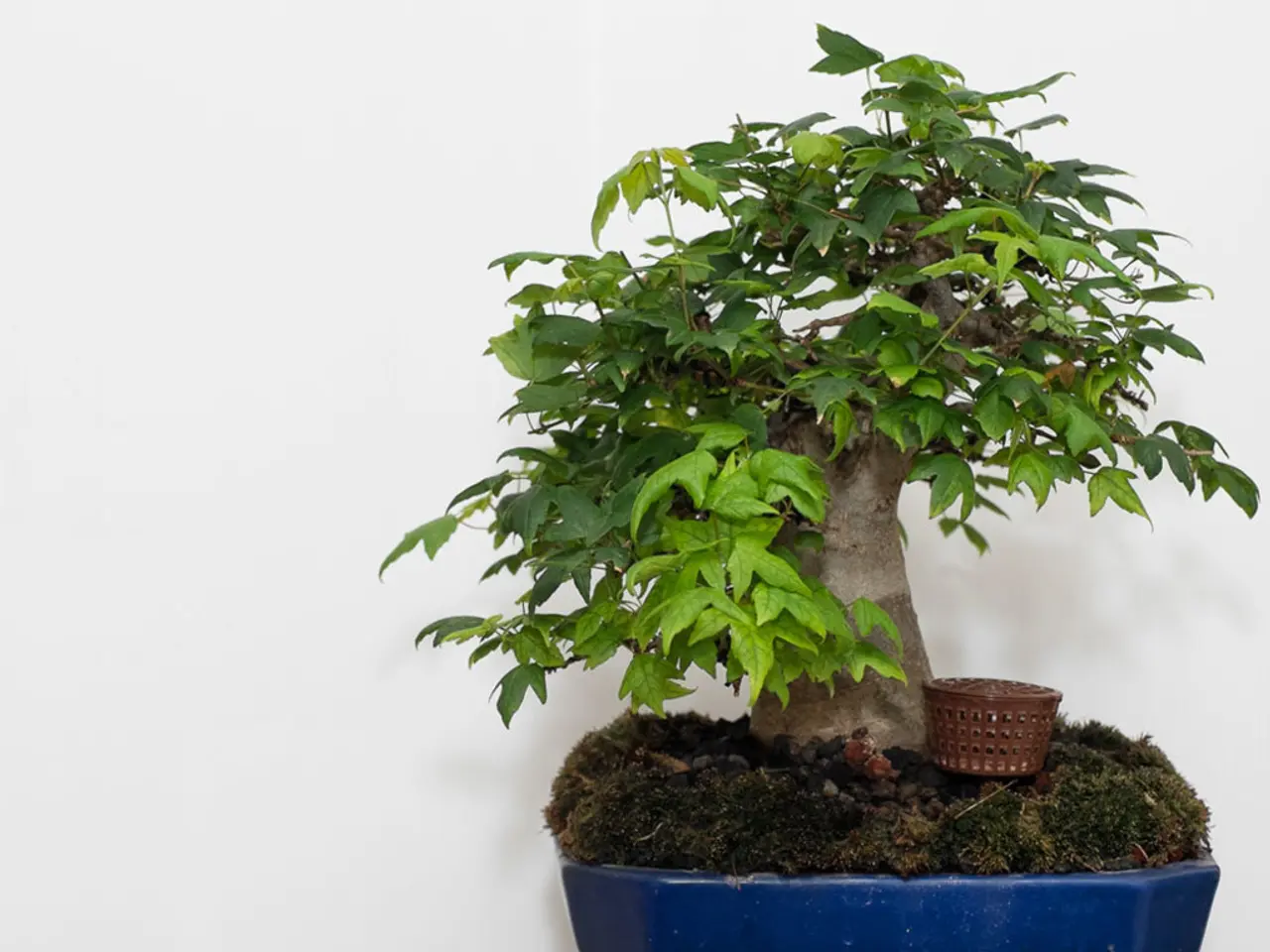Safeguarding Bonsai Plants During Quarantine: Preventing Infestations and Illnesses
Bonsai enthusiasts take pride in nurturing their miniature trees, but these delicate plants can fall victim to a variety of pests and diseases. To protect your bonsai collection, it's essential to implement a quarantine protocol. Here's how to do it.
The spider mite, a nearly invisible threat, weaves intricate webs on the undersides of leaves and sucks sap and nutrients from the tree, causing leaves to yellow, wilt, and eventually drop. To prevent this, when considering simultaneous quarantine of multiple bonsai trees, it's vital to prioritize individualized observation and isolation to prevent cross-contamination. Each tree should receive dedicated attention, minimizing the risk of pest and disease transmission.
During quarantine, bonsai enthusiasts should meticulously inspect their trees for telltale signs of spider mite activity, such as fine webbing, yellowing leaves, or the presence of actual mites. For scale insect infestations, inspect your bonsai trees for tiny, immobile bumps on the stems and leaves, often accompanied by a sticky, sweet-tasting substance called honeydew.
Common signs of fungal infections include white, cottony growth or powdery residue on leaves or stems, soft, mushy, or blackened areas on roots or trunk, premature defoliation or yellowing of leaves, unusual, pungent odors emanating from the soil or tree, and visible fungal growths. Fungal infections, often introduced through contaminated soil or water, can rapidly spread and cause widespread damage to bonsai trees, making swift recognition of their signs and symptoms critical to preventing devastating losses.
To effectively design and implement a quarantine protocol, follow these key steps:
- Isolation
- Quarantine new bonsai trees in a separate, controlled area away from existing collections for a minimum of 2-4 weeks to monitor for symptoms of pests or diseases.
- Inspection and Monitoring
- Regularly inspect quarantined trees for visible signs of pests (such as mites, aphids, scale) or disease symptoms (discolored leaves, spots, wilting).
- Use magnification tools to detect smaller pests or fungal spores.
- Sanitation and Hygiene
- Sterilize all tools, pots, and surfaces before and after handling bonsai during quarantine.
- Avoid sharing soil, water, or tools between quarantined and established trees without proper cleaning.
- Treatment During Quarantine
- If pests or diseases are detected, treat immediately with targeted organic or chemical controls appropriate for bonsai species and pests. Repeat treatments as per guidelines.
- Consider preventative fungicide or insecticide treatments during quarantine for high-risk species or known regional pests.
- Environmental Controls
- Maintain optimal quarantine conditions that discourage pest and disease proliferation, including adequate airflow, humidity control, and sunlight.
- Avoid overwatering or creating moist environments favorable to fungal growth.
- Documentation
- Keep records of the source, inspection dates, treatments applied, and observations during quarantine for accountability and traceability.
Implementing these measures creates an effective barrier minimizing the risk of introducing pests and diseases into your bonsai collection.
During the initial quarantine period, refrain from fertilizing to allow the tree to acclimate and minimize stress, ensuring a stronger foundation for future growth. Maintaining separate potting mixes for quarantined and established trees is crucial to prevent the potential transfer of pests or diseases.
Maintaining ideal humidity levels is vital in a quarantine area, as it can markedly impact the health and stress levels of newly acquired bonsai; a relative humidity of 40-60% is recommended to promote healthy growth and minimize stress. Early detection of spider mite activity is vital, as spider mites can spread rapidly, necessitating costly, time-consuming treatments.
While detailed bonsai-specific quarantine protocols are not explicitly available, general principles of plant quarantine, pest control, and disease prevention for ornamental plants emphasize isolation, hygiene, monitoring, and timely treatment as best practices. These practices are standard for preventing the spread of pests and diseases in plant collections.
- Ensuring a healthy home-and-garden lifestyle for bonsai enthusiasts includes implementing a quarantine protocol to protect their collection from pests and diseases, as these delicate plants can be susceptible to spider mites, scale insects, and fungal infections.
- To maintain the overall well-being of the bonsai collection, homeowners should establish a quarantine area for new bonsai trees, monitoring them regularly for signs of pests or diseases, while following best practices such as isolation, inspection, sanitation, treatment, and environmental controls to minimize the risk of introducing harmful organisms into their home-and-garden environment.



